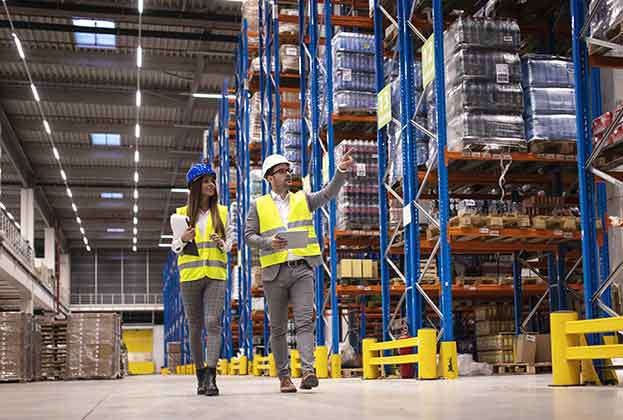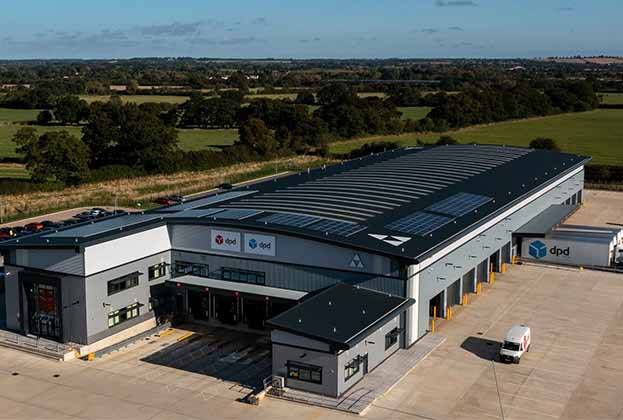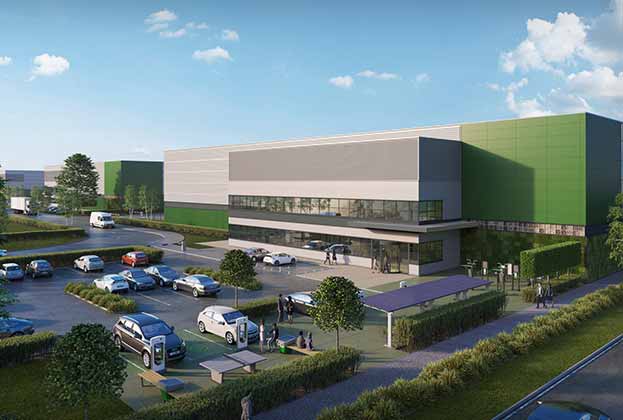A report demonstrating the wider economic, social and environmental benefits of the industrial and logistics sector
Foreword
The Covid-19 pandemic has demonstrated that our industrial and logistics facilities are a key part of the nation’s critical national infrastructure.
Alongside our supply chains, they support other important and growing sections of a strong economy and the way we live our lives by ensuring we have what we need at the right time. They are as crucial as the roads, rail, airport and port facilities needed to move goods around the country.
The sector also generates significant economic benefits supporting increasing numbers of high-quality jobs across the English regions. A thriving industrial and logistics sector is therefore critical to the government delivering on its ambitions to ‘level up’ across the UK with over 70% of demand for industrial and logistics space in the North of England and the Midlands.
If the industrial and logistics sector is to play its full part in levelling up, it is vital that we create a more agile planning system that is more responsive to the sector’s needs
Gwyn Stubbings, Planning Director, GLP, Chair of the BPF Industrial Committee
Enabling the sector to reach its full potential is essential to the government’s aspirations to address regional inequalities but our planning system remains a barrier and is restricting growth in the sector by not allocating enough land in appropriate locations. If the I&L sector is to play its full part in levelling up, it is vital that we create a more agile planning system that is more responsive to the sector’s needs.
This latest BPF Industrial Committee report builds on previous research publications advocating for a more responsive planning system to the needs of the I&L sector. The report also provides a comprehensive overview of the growing economic, social value and environmental credentials of the sector as well as presenting case studies from within the BPF membership to reinforce these qualities.

Introduction
The industrial and logistics (I&L) sector is not only an economic powerhouse but also delivers significant social value and is embracing innovative ways to reduce carbon
The aim of this report is to evidence the importance of the I&L sector to the UK, not just in terms of it being an ‘economic powerhouse’ but also in terms of its ‘growing social value credentials’ and contribution to ‘a green recovery 'boxed’. It is hoped that by reviewing the sector against economic, social and environmental objectives, this report presents a balanced and evidential account of the sector’s future growth potential and the critical role it can play in a post-Covid and Brexit UK.
The intended audience for the report is those integral to the sector’s future growth and success including: national government policymakers, local authority planners, elected members, investors and tenants, as well as those keen to learn more about the sector.
The report is structured as follows:
- An Economic Powerhouse focuses on the sector’s economic attributes, namely how I&L premises facilitate modern lives and therefore should be considered as ‘Critical National Infrastructure,’ similar to how major roads, ports, airports and rail freight interchanges are. We also discuss the sector’s contribution to the national economy and the key growth drivers that are underpinning record-breaking levels of demand. This chapter finishes by discussing a number of flaws in the way future demand and land needs are currently assessed as part of Local Plans and how these flaws can be addressed by using an alternative method developed by Savills and St. Modwen;
- Growing Social Value Credentials discusses the sector's contribution to local and regional communities, the Government’s ‘Levelling Up’ agenda and the range of jobs and training opportunities the sector creates as part of its wider supply chains. We also discuss how I&L developments are contributing to strategic infrastructure to the benefit of new housing developments and how modern I&L premises are adopting a more human-centric approach to their design; and
- A Green Recovery ‘Boxed’ outlines how the sector is embracing sustainability via a reduction in carbon across all phases of a property’s life cycle. We discuss how buildings are achieving net zero in construction; how carbon can be reduced during operations through clever building design solutions that improve energy supply and reduce energy demand; and we finally consider a property’s end of life, exploring how I&L premises can be repurposed for other uses.
Reader’s Note
When we refer to the industrial and logistics (I&L) sector we mean Light Industrial (formally B1c use class now part of Class E), General Industry (B2 use class) and Storage and Distribution (B8 use class). Effectively the primary use classes that require warehouses or factories (including ancillary offices) and associated yard spaces. These use classes typically cover the diverse range of industrial, manufacturing and logistics companies that operate within England.
Read the articles within Levelling Up – The Logic of Logistics below.
.jpg)



